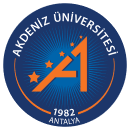Tourism is the most popular leisure activity in the 21st century. This activity –before to be industry– was popular in the early nineteenth century. But mostly, it was expensive and limited to a small number of locations. In the 1960s everything suddenly changed. While the changing living conditions were created extra time and money to spend. At the same time, reasonably-priced commercial aircraft were able to carry passengers to any airport of the world. Nowadays, international tourists’ arrivals reached 1.4 billion and half of these arrivals occurred in Europe.
Tourism is a very popular way of resting, of entertaining and, possibly, of acquainting with cultures, customs, human behaviors, etc., which is also a major source of revenue for tourism countries. In modern times, tourism has evolved into a massive and one-dimensional “tourism industry” (inbound tourism, mainly, and domestic tourism, less), massively developing in certain regions of the tourist country and at certain periods of the year. It is dominated by all-inclusive holiday “packages” in large hotels and resorts, but also with adverse effects on the social level (economic and social life of permanent residents and workers, often with limited labor rights, is depended largely on it), on the local culture, and on the natural environment (construction of tourist complexes on coastlines or even in protected areas, and other ecosystem disturbance). The changing living conditions in recent years have caused changes in the tourism structure in many areas. Changes in the trends of touristic consumers towards their travel destinations in global tourism force touristic destinations to develop new and alternative tourist products in order to meet these changes. In this context, alternative tourism is defined as a tourism form that is in harmony with nature, social values and the values of local people, allows the positive relationship of both visitors and local people, and enables them to
share their experiences.
Gradually, a global trend has been created towards the development of human and natural forms of tourism (cultural tourism, hiking tourism, conference tourism, city-breaks tourism, agritourism, etc.), targeting to sustainable tourism development, which is not restricted to certain regions of a country and during particular year periods, but a tourism which is feasible in every region of a country and throughout the year.
Alternative tourism is the opposite form of mass tourism. In Europe, the term “alternative tourism” was used to determine touristic activities aiming at regional development of all the areas of a country, creating alternative income for economically disadvantaged categories of citizens, encourages interaction with the local environment, people and communities and, of course, touristic activities environmentally friendly to the habitats and the ecosystems.
Son güncelleme : 18.10.2023 15:54:18
